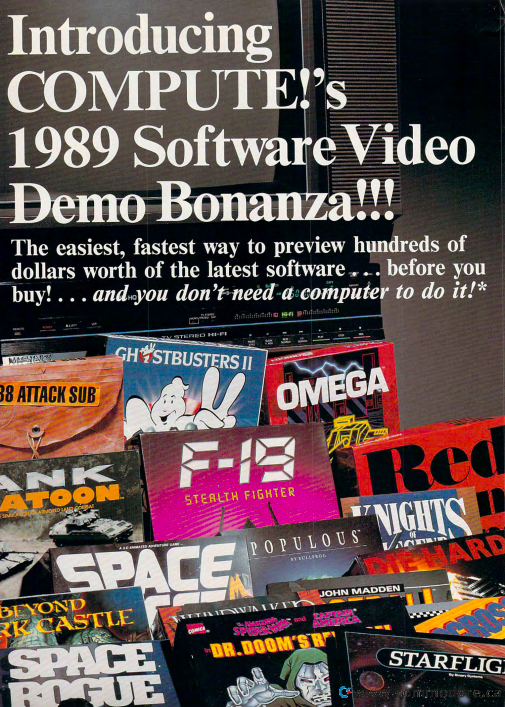Compute! A history.
Part 2
When I first started writing about old video game magazines the idea was to just riff on whatever themes and memories came to mind. Which was fun, but it wasn’t necessarily accurate. And the more I started looking back the more I realised there were untold stories that deserved a more nuanced approach than me commenting on moustaches or calling people “dorks.”
I didn’t call anyone at Compute! a dork, but I did say the publication was a dinosaur that didn’t know it. That may or may not be true. But it’s not fair to the people who put the damn thing together month-after-month for 15 years.
Which is how I found myself reaching out to former editor Peter Cosco, who steered the magazine during the transition from 8bit micros to IBM compatibles, and was kind enough to take a chance on a random kid in his LinkedIn inbox.
You can consider this is a companion piece to my original punk-kid article about Compute! One that adds some much needed context to my free association piece about cyberspace, the rise of PC compatibles, and the changes that were taking place in the industry at the tail end of the 80s.
Clone wars and the consumer market
In the mid 80s computers fell into two broad categories; affordable kids micros like the Commodore 64, and the grey IBM compatibles aimed at serious men with engineering degrees.
By the time Peter took took over as editor of Compute! those lines were starting to blur. The arrival of cheaper IBM clones meant the price gulf between the two markets was shrinking, and an AT or XT IBM compatible was just about affordable for the average family.
As Peter explains, “The personal computer industry was making a huge shift from the hobbyist market to a consumer market. [But] it wasn’t until clone makers started producing less expensive machines that the consumer market started to gain momentum.
“This required a rethink of Compute!’s direction. A magazine that had begun life aimed at a hardcore crowd ready to type in programs and assemble their own PCs had to change with the times.
“The direction I set was to move toward a lifestyle magazine as much as we could while retaining our focus on personal computing and technology. This seemed sensible to me as there was an explosion in the consumer software market and people needed information about those programs and hardware.”
Modest means and the tyranny of distance
Compute! wasn’t the first magazine to see the writing on the wall. Other publications had long abandoned type in programs for a more consumer driven approach.
But unlike its rivals, who were operating out of Silicon Valley in California, or publishing hubs in New York and Chicago, Compute! was based in Greensboro, North Carolina, and came from more modest means.
“I am proud of how we had the courage to change our focus and look for a new audience,” explains Peter. “My biggest regret was that we just didn’t have all we needed to become a lifestyle technology magazine like Wired. I don’t think we could have competed with Wired — I am sure that was out of our reach — but there was room for another magazine in that space and I wished we had had what it took to be that magazine.”
3000 miles from Silicon Valley, and without the financial clout of other publishers, Compute! was always going to struggle. But it wasn’t just about money or access. There was a growing chasm among the magazine’s audience, and what a digital future should represent.
Leading a horse to water
While Peter and his team saw where the industry was going, that didn’t necessarily mean the readers of Compute! were willing to follow.
As he recalls, “These changes disenfranchised many of Compute!’s original readers, who wanted us to continue printing code and other activity tools. But I don’t think our readers really grasped the depth and scope of the invention and innovation going on at that time.
“The first time I saw Compute!, long before I worked there, it had pages and pages of code, which readers were expected to type in to create games and applications. It was all so geeky.
“My view was that I wasn’t interested in chips and RAM and all that as I was interested in how the machine could benefit people’s lives. Of course this involved knowing the tech — but that was just the start and not the end.”
What could have been
Wedged between its tech-geek roots and a rapidly evolving lifestyle market, Compute! was never able to make that great leap forward. Squeezed on all sides, located on the wrong side of the country, and lacking the resources and budgets offered its shiny new rivals, it carried on for another several years to a shrinking audience.
“Personal computing was filled with the most fascinating, interesting, compelling people I’d ever met,” Peter laments. “I regret we didn’t do more stories of the people behind the tech, that we could not find our way to the beating heart of Silicon Valley.
“What we were able to do I was proud of. But the general consumer market was where the real promise lay, and that came around the early 1990s.”
….
Follow-us on Twitter via @American80s
Forgotten Worlds: A magazine about old video game magazines coming soon.



